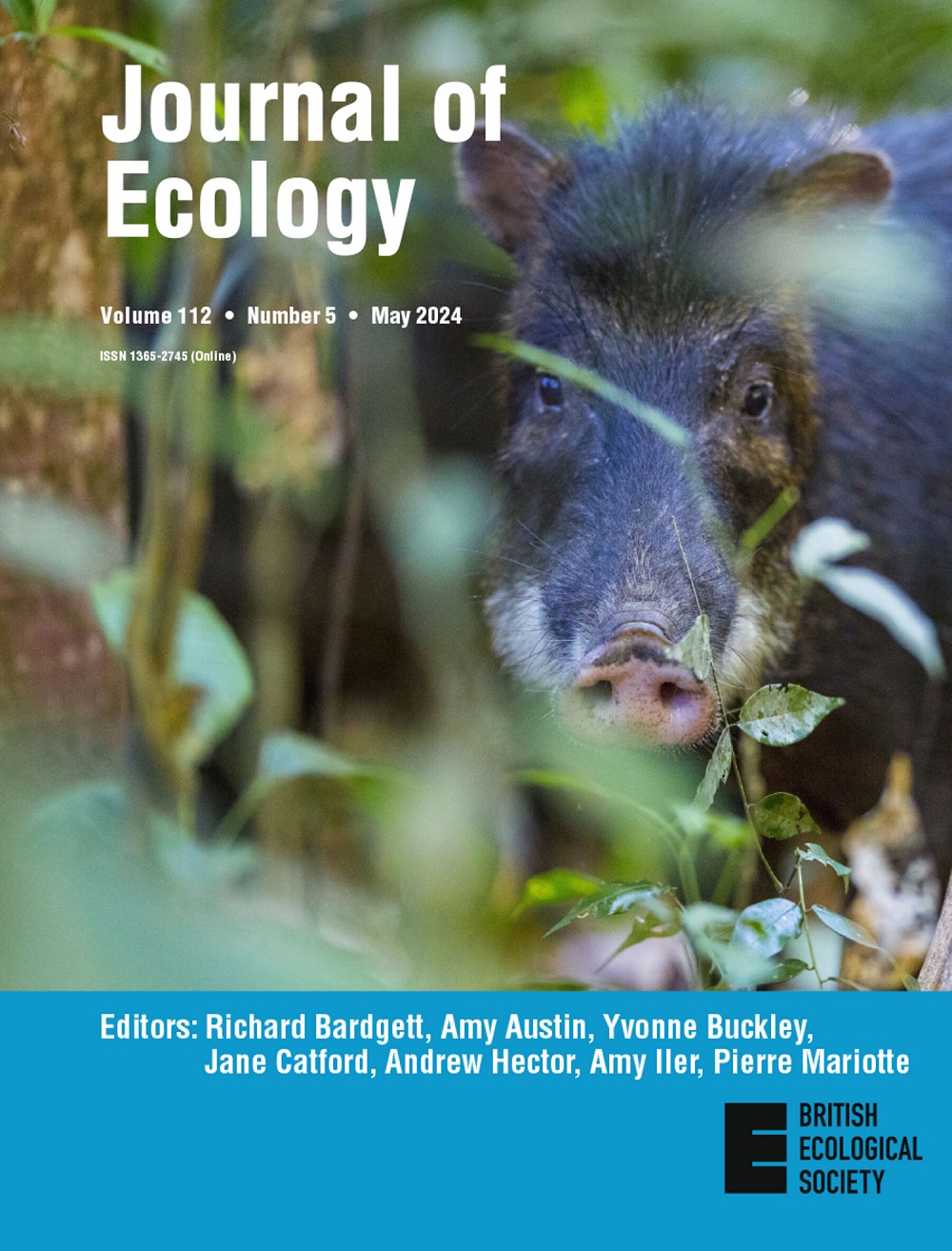壳斗科大种子对部分花岗岩的防御策略
IF 5.6
1区 环境科学与生态学
Q1 ECOLOGY
引用次数: 0
摘要
大种子与各种各样的动物(如食肉动物)相互作用,并通过某些小动物的觅食行为(如贮藏)传播。长期以来,一些最具代表性的大种子植物物种一直吸引着生态学家研究生物相互作用,如橡树及其壳斗科的近亲。壳斗科橡子的传播是通过同宗传播的,这是一种特殊的传播模式,在这种传播模式中,动物伴侣既充当种子传播者,又充当花岗岩捕食者。尽管颗粒性(即种子食草性)对植物后代的生存有深远的影响,但对种子储备的部分破坏是一种普遍现象,并不总是导致种子死亡。然而,先前的单物种研究在处理和性状方面得出了混合的证据,使得部分花岗岩对植物再生的影响尚不清楚。通过对20种壳斗科植物的1185颗种子进行人工颗粒实验,定量分析了部分种子储备损失对种子萌发、幼苗生长和生物量分配的影响。研究表明,尽管部分颗粒状象牙会降低幼苗的生长(如总生物量和叶片数量),但对种子萌发或幼苗的总体生物量分配(如叶片质量分数和根冠生物量比)没有显著影响。更容易被捕食的种子的幼苗具有更高的比叶面积,这表明它们倾向于长出更大但保护较少的叶子来对抗食草动物,这可能是为了争夺光线。合成。由于种子通过分散囤积的花岗岩动物传播,已经进化出相对较大的尺寸,如壳斗科橡子,我们的研究结果表明,这种类型的种子可以忍受部分花岗岩,以换取较高的传播效率。该研究为我们对种子大小多样性和进化的认识开辟了新的视角。我们得出结论,种子大小本身是一种防御性状,大的种子抵消了种子储备的潜在损失,以逃避完全的捕食并允许发芽。本文章由计算机程序翻译,如有差异,请以英文原文为准。




Large seeds as a defensive strategy against partial granivory in the Fagaceae
求助全文
通过发布文献求助,成功后即可免费获取论文全文。
去求助
来源期刊

Journal of Ecology
环境科学-生态学
CiteScore
10.90
自引率
5.50%
发文量
207
审稿时长
3.0 months
期刊介绍:
Journal of Ecology publishes original research papers on all aspects of the ecology of plants (including algae), in both aquatic and terrestrial ecosystems. We do not publish papers concerned solely with cultivated plants and agricultural ecosystems. Studies of plant communities, populations or individual species are accepted, as well as studies of the interactions between plants and animals, fungi or bacteria, providing they focus on the ecology of the plants.
We aim to bring important work using any ecological approach (including molecular techniques) to a wide international audience and therefore only publish papers with strong and ecological messages that advance our understanding of ecological principles.
 求助内容:
求助内容: 应助结果提醒方式:
应助结果提醒方式:


